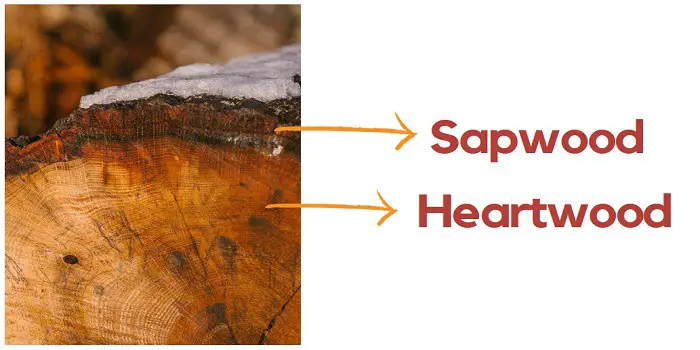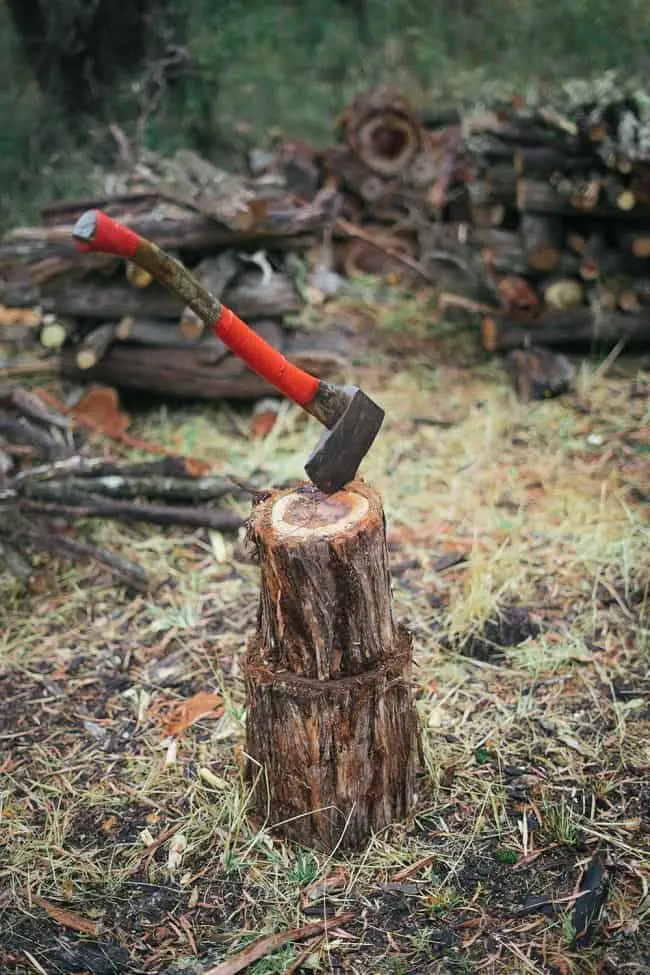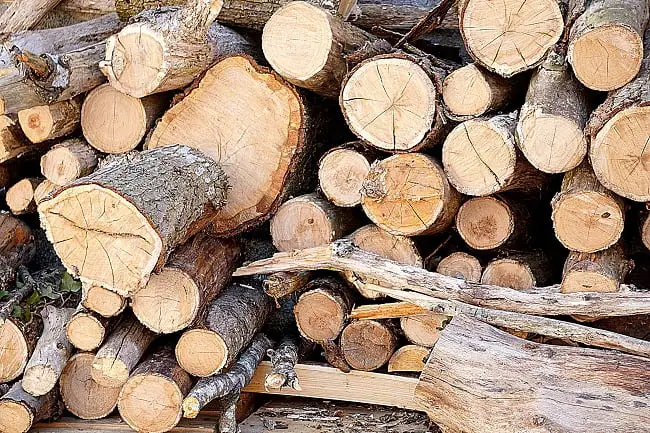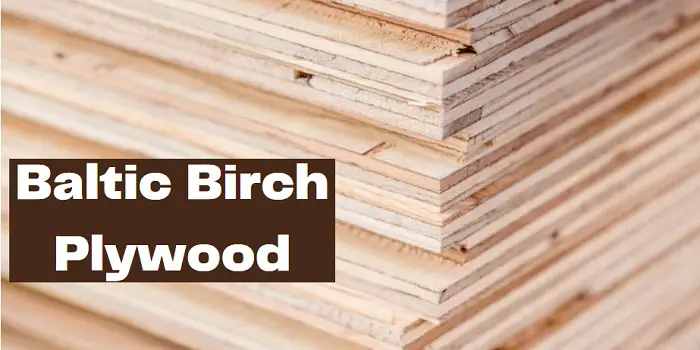
Although the two parts of the same tree, the heartwood (also referred to as Duramen) is the central core, whereas sapwood is the outer part of the tree trunk.
To be more specific, the heartwood is the dead inner part of the wood, while the sapwood is the outermost living part of any woody stem, branch, or trunk.
Since the sapwood helps in transporting the water and essential minerals (to the leaves, branches, and other parts of the tree), it’s the part that contributes more to the overall growth of any tree.
Heartwood, on the other hand, acts as a supportive spine of a tree which helps in making them stand for long – no matter how adverse the external conditions are.
With that said, heartwood is more useful for woodworking and construction because of its excellent strength and non-shrinkable properties.
Sapwood is not that hard and strong. Also, it’s prone to rot soon and is, therefore, considered less usable for interior or exterior projects.
What is Heartwood Used for?
Heartwood naturally has less moisture content and can be easily kiln-dried. Because it’s very dense, dry, and strong, it is also naturally protected from fungi and insects.
Heartwood is hence primarily used for various kinds of home-building projects (both structural as well as non-structural) by home builders and experienced woodworkers.
Most furniture, floors, and roofs that you see are generally made from heartwood rather than sapwood.
What is Sapwood of a Tree Used for?
Sapwood is not as strong and beautiful as heartwood. But that does not mean it’s not at all useful.
Sapwood is many times used in combination with heartwood, especially for beginners to practice making cuts and to work on projects like carving.
You can also use the sapwood of a tree for projects that require beautiful patterns or two-tone colors.
The drawback, however, of using sapwood is it’s susceptible to getting damaged due to fungal growth and insects that love to thrive on wood.

Why is Heartwood Better Than Sapwood?
The key difference that makes the heartwood of the tree log much better than sapwood is its excellent workability, strength, rich color, and decay-resistant properties.
Due to the added strength and low moisture content, the heartwood is a great choice for cabinets, furniture, floor, fence, roof, decks, and various other outdoor projects.
Also, due to its ability to withstand moisture, rots, and pests, you need less maintenance for heartwood.
Sapwood, on the other hand, is not so great when it comes to workability.
This means that if you use it incorrectly, it will start to rot and smell within a few months of exposure to moisture.
The Considerations
While heartwood offers more benefits due to its hardness, keep in mind that more hardness can sometimes also bring lots of trouble for woodworkers.
Simply put, there are some species of heartwood that come with so high Janka hardness – that it becomes very difficult to work with them.
Wood varieties like Red Mahogany, Red Oak, and Ebony are a few to name – where using machines can be difficult for cutting and shaping their heartwood.
Whereas the heartwood of species like Red Maple, Douglas Fir, and many more that come with Janka hardness less than 1,000 lbs. are relatively easy to work.
Should You Discard Sapwood of the Tree?
The sapwood of the species, with high Janka hardness, is also relatively hard and can be used for woodworking and other furniture projects.
Rather than completely removing and discarding the trimmed portion, you can allow them to dry and use them as firewood.
Alternatively, you can use them for practicing and making DIY items like toys and indoor furniture items.
If it turns out to be a great project, simply seal it with some paint, stain, or polyurethane that will help them to last for a long.

How to Distinguish Heartwood from Sapwood?
Generally, you can tell sapwood from heartwood by the difference in its colors, grains, and, many times, aroma.
In most cases, you will find that the color of heartwood is always on the darker side of the spectrum than the sapwood of the same tree.
This is due to the fact that as trees grow, their sapwood changes to heartwood.
The heartwood that is developed (from the “retired” sapwood) stops the transportation of water and nutrients to the leaves of the tree.
Also, their cells die and begin to dry – making the color of heartwood darker, which usually becomes even more, darker with time, like in mahogany and cherry wood.
The color of the sapwood in the tree also darkens with age, but never as much as heartwood.
Why is Heartwood Usually Darker in Color Than Sapwood?
The reason why Heartwood of the wood is darker in color is that it’s made up of dead tissues. The sapwood, on the other hand, is comprised of living tissues which are generally lighter in color.
Depending on the wood species, you will often find the color of heartwood to be rich red, brown to dark chocolate brown due to tannins.
While the sapwood is mostly light yellow, creamy to pale white in color due to the presence of a high amount of moisture and open cells in the wood part.
Like in cherry trees, the color of sapwood is light yellow, and the heartwood is rich red to reddish-brown.
In cedarwood, the heartwood is reddish to pinkish brown, while the sapwood is pale yellowish-white to whitish-cream.
While the color may vary depending on different species of cedarwood but they are almost close to each other.
Walnut trees have a wider heartwood part than others, making them better for woodworkers.
The color tone of walnut heartwood varies from brown and dark brown to gray, purple, or reddish.
The sapwood of walnut is not too wide and is mostly white in color. However, it may vary from gray to dark yellow in a few walnut species.
Final Thoughts
For a tree itself, sapwood, as well as heartwood, is equally important.
Where the former helps in the growth by conducting water, the latter helps in providing better support to the larger trees by their strength. But for DIYers, woodworkers, and constructors, the heartwood is more important because it’s stronger and more durable.
While most wood experts majorly use heartwood for exterior applications, there are manufacturers who consider using sapwood along with heartwood for making home furniture as well as various other indoor applications.
Share the post "Heartwood OR Sapwood – What’s Better (and More Useful)"

Hi, I am Mark Garner a professional carpenter, woodworker, and DIY painter. I live in the small city of Peoria, Arizona as a semi-retired woodworker. I have started this blog with a simple motive to help you with my wood experience in this sector. If you like to know more about what I love doing and how it all got started, you can check more about me here.




